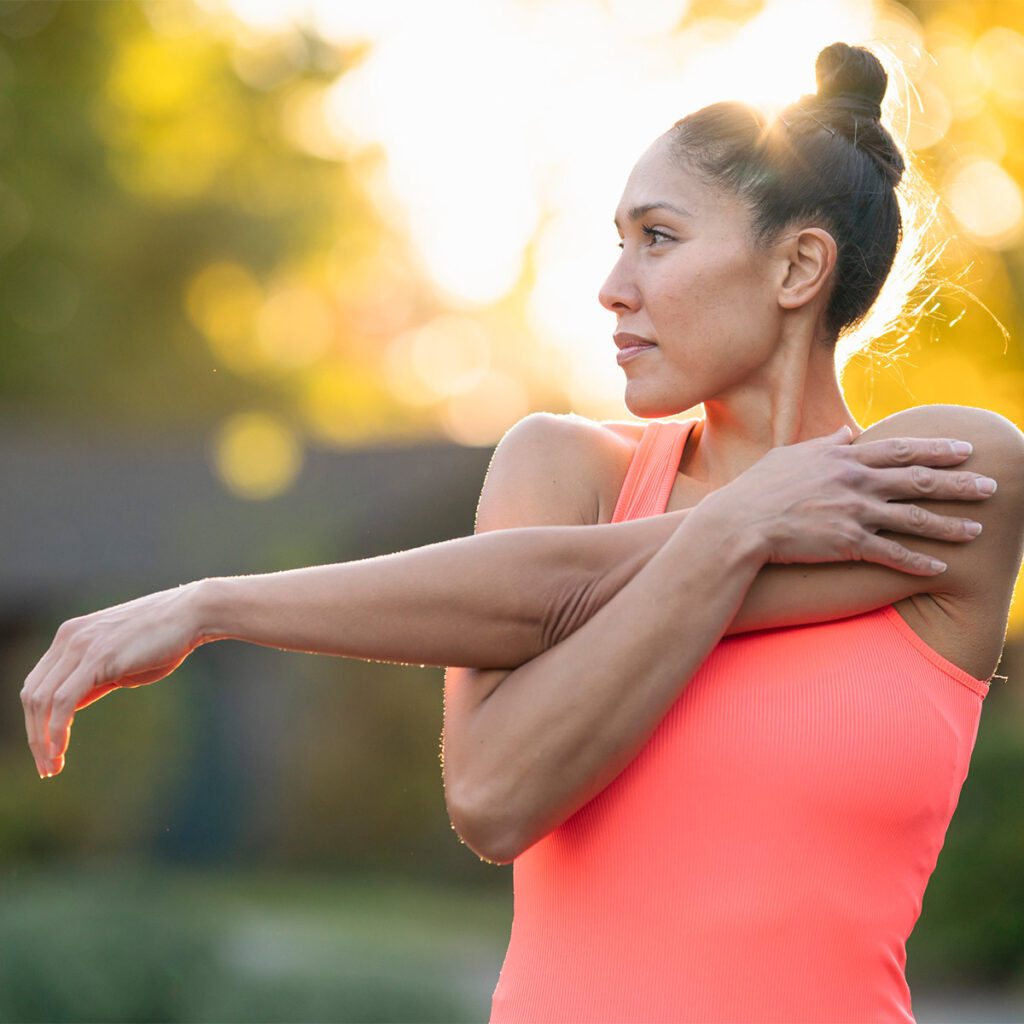The health benefits of cardiovascular exercise have been burned into the collective consciousness of American consumers since Jane Fonda and Richard Simmons were on the forefront of the aerobics revolution. More recently, strength training and the lasting effects of this muscle-building activity have staked out a place in the American psyche.
We all appreciate the importance of stretching before and after exercise to reduce the possibility of injury and decrease muscle soreness. What about stretching for the sake of stretching? Is the act of stretching itself as important as cardio activity and strength training? Most experts would answer this question with a decided, “yes” and suggest regular stretching for everyone, including those who do not exercise regularly.
Barry Dale, Assistant Professor at UTC’s Department of Physical Therapy, agrees, “Stretching is important for the general population to maintain increased muscle flexibility and joint range of motion.”
Increased flexibility and range of motion are not the only health benefits of regular stretching. It reduces muscle tension as well as mental and emotional stress. Increased joint range of motion improves overall athletic performance and makes simple tasks, such as tying shoes and buttoning pants, easier for people bothered with joint pain. Stretching increases blood circulation thereby raising energy levels in the body.


It encourages better posture for children and adults alike and enhances the development of body awareness. This can be particularly beneficial to the young among us.
Stephanie Rider, co-director of ClearSpring Yoga on Market Street, touts the importance of stretching for teenagers, “I see lots of teenagers that are extremely inflexible because they have spent so much time sitting in school and in front of computers. While it’s never too late to start a stretching program, the teenage years are a great time to establish good posture and healthy body alignment.” Perhaps the most significant impact that stretching can have on a person is a simple one. Routine stretching simply helps people feel better overall. Madia Swicord, owner of Madia’s Studio on South Broad Street, acknowledges the importance of regular stretching, “It is one of the primary things that keeps us useful and free of pain. Without it we aren’t balanced in health.”
When people think of deliberate stretching, they often picture a thin woman in a leotard, sitting on the floor in a meditative position. This is not necessarily an accurate image. David Brock, Managing Partner of The Sports Barn, is a strong advocate of yoga: “Yoga is a great way to start stretching. A basic yoga class can teach you how to be safe in your stretches and how to get into it gently and make it fun without making it difficult or too strenuous.”
While yoga and Pilates are excellent methods of stretching and increasing flexibility, they are not the only ones. And, fret not, leotards are not a requirement. Stretching is incredibly easy to incorporate into your daily life because you can do it anywhere. It requires no equipment, a minimal amount of time and can be completed while doing other activities like watching TV or talking with your family. You can sit in front of your TV and go through some stretches or yoga positions. You’ll do it because the health benefits are undeniable and because it will prevent you from sticking your hands in the bowl of chips during Grey’s Anatomy. It’s difficult to shovel Doritos into your mouth when you are in Downward-Facing Dog position.
If you are intimidated by stretching because you think you are hopelessly inflexible, take heed. There is no such thing as “hopelessly inflexible” and the only way to increase flexibility is to stretch those muscles. Everyone has to start somewhere, and starting small and building momentum is the key to success. You can work a stretching routine into your life from your office chair or recliner or from a yoga studio or gym. A Google search of the phrase, “chair stretches” reveals a plethora of detailed chair-stretching routines for people of all ages.
Barry Dale advises novice stretchers to take things slowly, “Begin a stretching routine cautiously and be sure to pay attention to the sensations in your body. You should feel moderate discomfort but no pain, and the discomfort should be confined to your muscles only. A stretch should be held for 15-30 seconds and repeated 3-5 times.” Sounds easy enough, right? So, put down the bowl of chips and get started. The only thing you have to lose is joint pain, tension and low energy levels.

